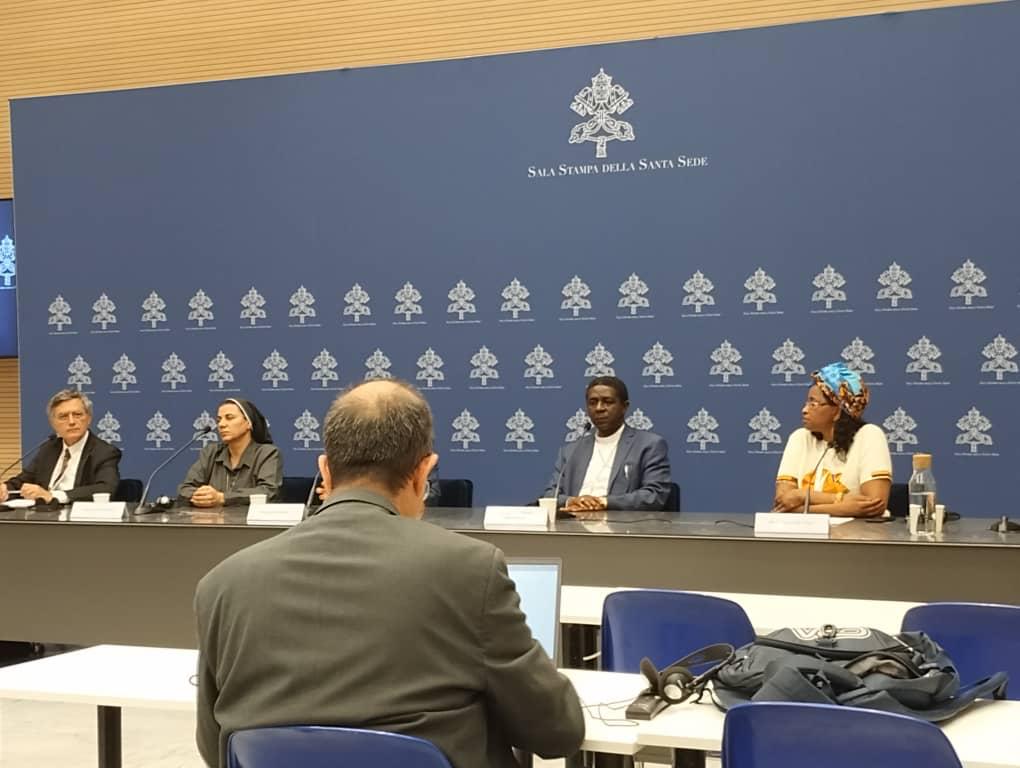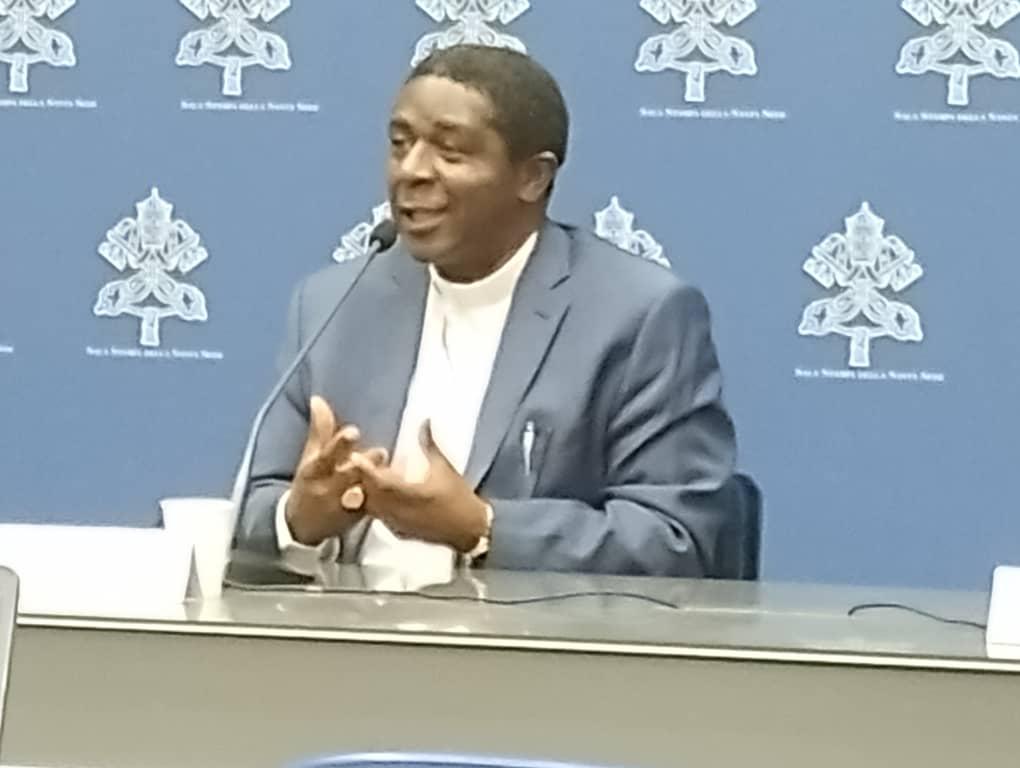SYNOD: Pilgrimage to Catacombs at San Sebastiano Signifies Communion With Reality of Suffering Churches

Fr. Andrew Kaufa, SMM
To mark the end of the second module of the Synod Assembly which is going on at Aula Paul VI at the Vatican, Synod participants on Thursday, October 12, took another pause of prayer and silence by making a pilgrimage to the Basilica of San Sebastian and the catacombs where thousands of martyred Christians in the early Church including Saint Peter and Paul, were first buried.
It is at San Sebastian that, at the end of the second Vatican Ecumenical Council, the Council Fathers also made a pilgrimage to the holy site and made a pact of commitment to journey together in pastoral charity and collegiality.
Pope Francis at the opening of the Synod insisted that listening, silence, and spiritual discernment are key to the success of the Synod. Therefore, the pilgrimage “brings them (the participants) back to the cradle of Christianity where thousands of Christians in the early Church were persecuted, killed, and buried,” said the Synod Relator Cardinal Jean-Claude Hollerich.
The recitation of the Apostolic Creed from the catacombs as participants felt the damp smell of the soil, the silence and darkness of the graves, and the cool temperature in the underground environment only enhanced the sense of communion with Saints Peter and Paul and all the martyrs of the early Church in Rome.
 Today, Friday, October 13, the assembly enters into the fourth model where synod participants are expected to reflect on section B2 as stipulated in the Instrumentum Laboris of the Synod on Synodality. This stage comes after a laborious three-and-a-half day’s work on the third module during which participants shared their reflections, both in small working groups and in General congregations, on the five key questions regarding communion, participation, and mission.
Today, Friday, October 13, the assembly enters into the fourth model where synod participants are expected to reflect on section B2 as stipulated in the Instrumentum Laboris of the Synod on Synodality. This stage comes after a laborious three-and-a-half day’s work on the third module during which participants shared their reflections, both in small working groups and in General congregations, on the five key questions regarding communion, participation, and mission.
Module 3 of the Synod Assembly
According to the Instrumentum Laboris, the third model questions invited the participants to reflect on how best the Church can be a sign and instrument of communion with God and of unity of all humanity. After Fr. Timothy Radicliffe reflection on the story of the conversation between Jesus and the woman at the well (John chapter 4), the 348 participants from across the world, divided in working groups of interest but also through the General Congregations, went into guided reflections on how the synod Church can be open and welcoming to all to make credible the promise that love and truth will meet (Ps. 85:1); how the universal Church can fulfill its mission of uniting all the disciples of Jesus Christ through a renewed ecumenical commitment; how the Church can enrich herself by her experience of inter-faith and inter-religious dialogue in the multi-faith environment.
This became a very important stage of the synod as points of convergence and diversion call the participants into deeper reflection in silence, prayer, and spiritual conversation, of which the groups have presented their reports to the General Secretariat of the Synod.
Synodal Task in Module 4
Section B2 of the Instrumentum Laboris (IL 51ff) invites the participants in the fourth model to once again, go deeper in their reflection, but this time focus more on how a synodal Church can enhance collaboration in her commitment to the mission which the Lord left his disciples in the context of the Church in the light of modern realities.
“Mission allows one to receive the experience of Pentecost: having received the Holy Spirit, Peter, and the eleven stand and took the word to announce the crucified and risen Jesus to all those living in Jerusalem (cf. Acts 2:14-36). Synodal life is rooted in the same dynamism. Many testimonies describe the lived experience of the first stage in these terms, and even more numerous are those that link synodality and mission in an inseparable manner,” reads IL 51.
In reference to the Vatican II document Lumen Gentium which affirms the necessity of the Church as a means of salvation in Christ, the Instrumentum Laboris argues that the credibility of the Church in the modern world shall depend very much on how much the Church contributes “to construction of a community in which relationships are a manifestation of God’s love and therefore whose life becomes a proclamation” or rather an occasion of communion as reported by Saint Luke in the Acts of the Apostles on chapter 2 verses 42-47.
Therefore, during the fourth module, according to the Instrumentum Laboris (53), the synod assembly will reflect on the Church’s willingness to journey together in communion, sharing their resources, gifts, and tasks as baptized persons, each according to their riches and needs: You received without pay, give without pay (Mathew 10:8).


